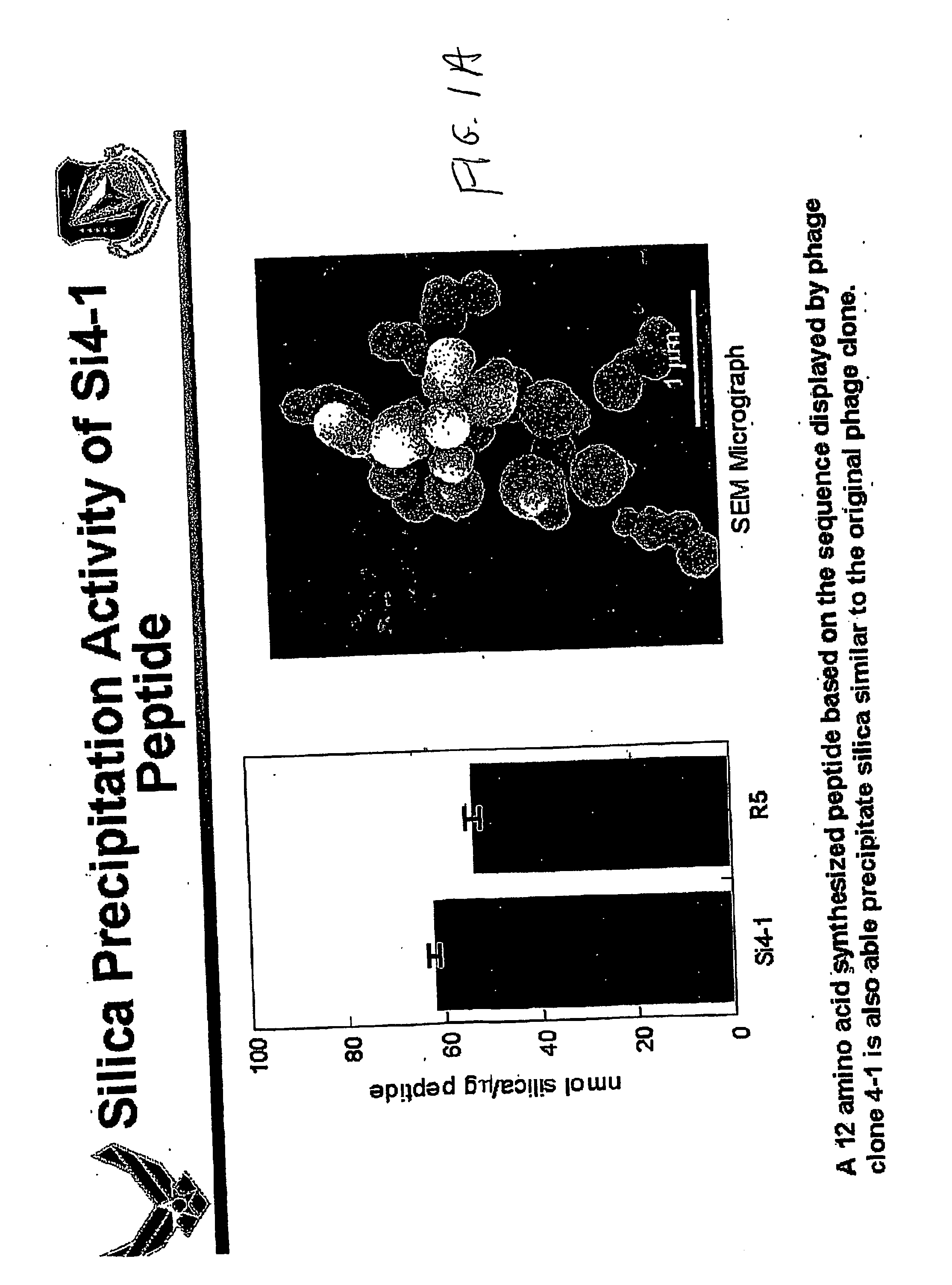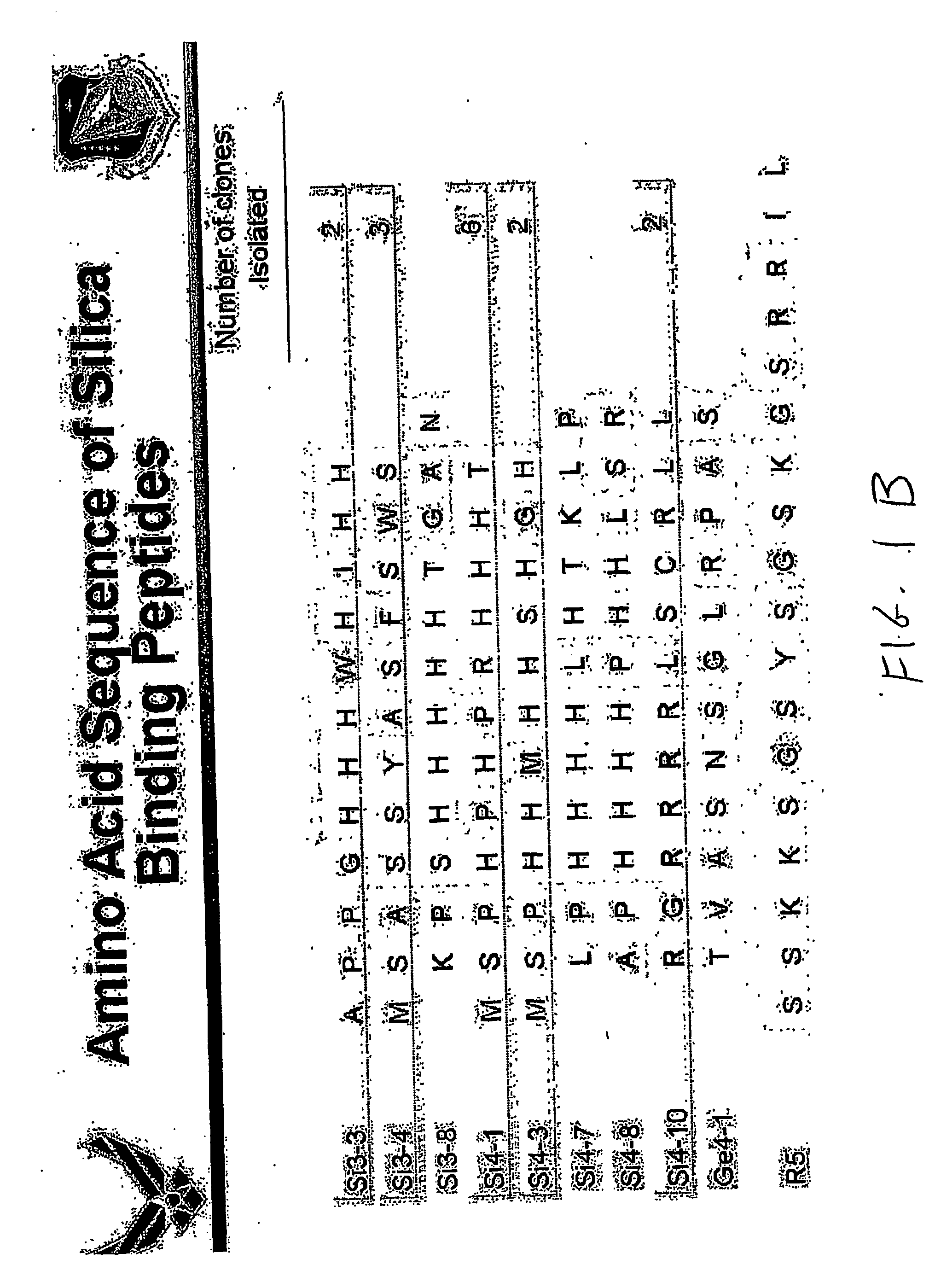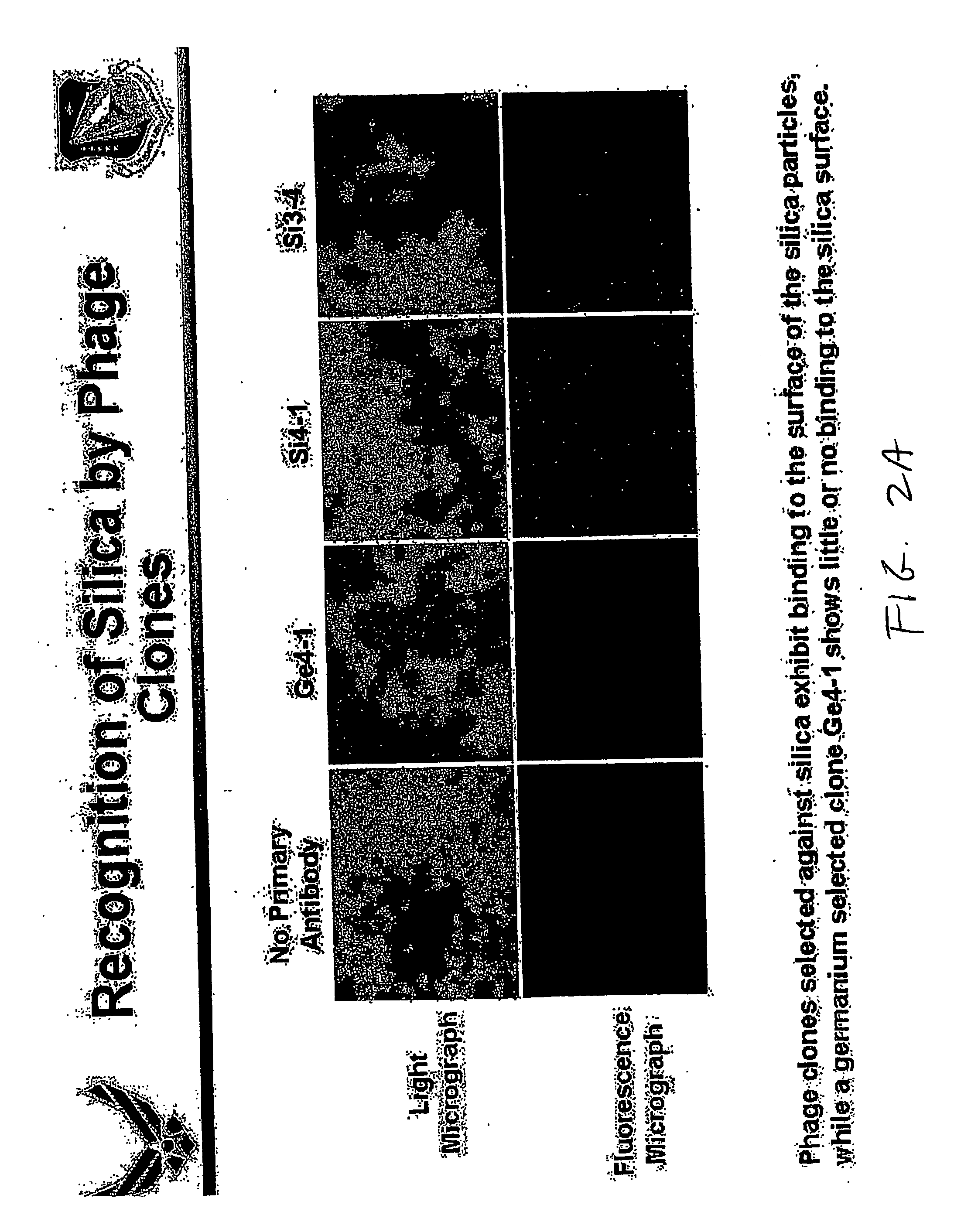Method of isolating binding peptides from a combinatorial phage display library and peptides produced thereby
a technology of combinatorial phages and binding peptides, which is applied in the field of isolating binding peptides from a combinatorial phage display library and peptides produced thereby, can solve the problems of insufficient elimination or reduction of specific metal levels, toxic ingredients that need to be removed from a site, and inability to use proteins to possibly direct the assembly of nanostructured components into sophisticated functional structures. , to achieve the effect of reducing the level o
- Summary
- Abstract
- Description
- Claims
- Application Information
AI Technical Summary
Benefits of technology
Problems solved by technology
Method used
Image
Examples
example 1
Isolation and Testing of Silica-Binding and Precipitating Peptides In Accordance with the Invention
Overview
[0048] In accordance with the invention, a method was carried out in an effort to identify peptides from a combinatorial phage peptide display library that have the ability to catalyze silica precipitation based on the molecular recognition ability of the peptides for silica. We first screened a combinatorial phage peptide display library for peptides that specifically interact with silica and subsequently tested for silica precipitating activity. In order to isolate peptides that are able to bind to silica, we synthesized the target, biogenic silica, using the silaffin-derived R5 peptide as described by Kröger et al., (1999). The R5 peptide (FIG. 1B), a 19 amino acid peptide unit of silaffin-1 precursor polypeptide, is able to precipitate silica within minutes when added to a freshly prepared solution of hydrolyzed silicic acid. Scanning electron microscopy (SEM) analysis o...
example 2
Preparation of Silver Binding Peptides in Accordance with the Invention
Methods
[0082] In accordance with the present invention, the following techniques were utilized in the preparation of silver-binding peptides useful in the patterning of nanostructures:
[0083] Silver binding peptides were selected using the Ph.D.-12C phage display peptide library obtained from New England Biolabs, Inc (Beverly, Mass.). The target binding, elution and amplification were carried out according to manufacturer's instructions. Briefly, the peptide library was incubated with acid etched silver particles (nanosized activated powder, Aldrich, St Louis, Mo.) in Tris-buffered saline containing 0.1-0.5% Tween-20 (TBST) for 1 hr at room temperature. The silver-phage complexes were then washed several times with TBST buffer. The phages were eluted from the particles by the addition of glycine-HCl (pH 2.2) for 10 minutes. The eluted phage were then transferred to a fresh tube and neutralized w...
example 3
Preparation of Cobalt Oxide Binding Peptides in Accordance with the Invention
[0116] Isolation of Cobalt Oxide Binding Peptides. In accordance with the invention, a 12 amino acid phage peptide display library (PhD-12, New England Biolabs, Inc., Beverly, Mass.) was utilized in the isolation and identification of cobalt oxide binding peptides. The target binding, elution and amplification was carried out according to manufacturers instructions as recited in the above examples. In this case, the library was incubated with washed particles of cobalt oxide to pan for phages producing peptides which bound to cobalt oxide. Phage were eluted from the particles as set forth above, and subjected to 34 additional rounds of panning with cobalt oxide. After the final panning procedure, E. coli ER2537 host-cells were infected with the eluted phage and plated on Luria Broth (LB) plates to enable the isolation of nucleic acid (DNA) from the resulting phage producing cobalt oxide binding peptides. T...
PUM
| Property | Measurement | Unit |
|---|---|---|
| pH | aaaaa | aaaaa |
| diameter | aaaaa | aaaaa |
| diameter | aaaaa | aaaaa |
Abstract
Description
Claims
Application Information
 Login to View More
Login to View More - R&D
- Intellectual Property
- Life Sciences
- Materials
- Tech Scout
- Unparalleled Data Quality
- Higher Quality Content
- 60% Fewer Hallucinations
Browse by: Latest US Patents, China's latest patents, Technical Efficacy Thesaurus, Application Domain, Technology Topic, Popular Technical Reports.
© 2025 PatSnap. All rights reserved.Legal|Privacy policy|Modern Slavery Act Transparency Statement|Sitemap|About US| Contact US: help@patsnap.com



